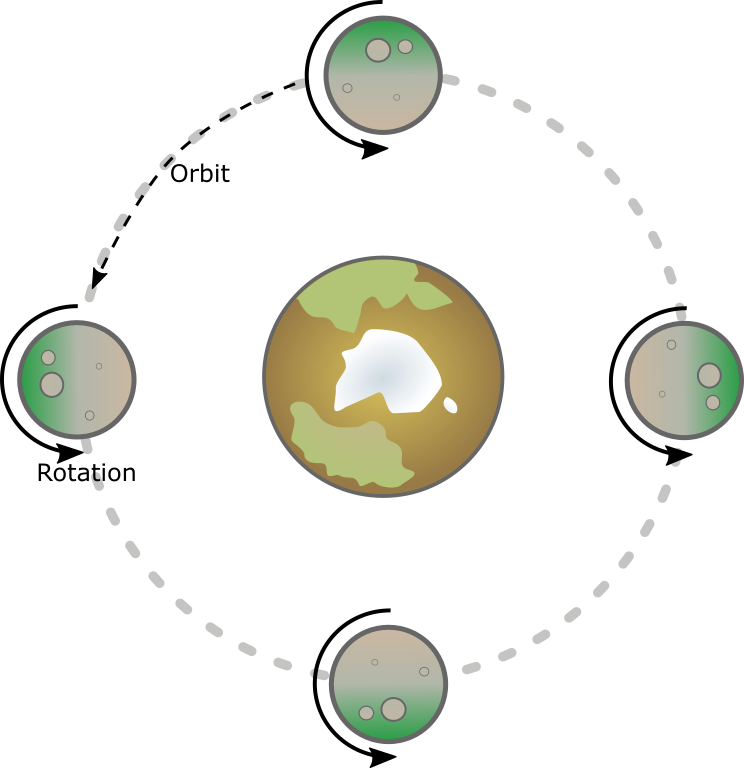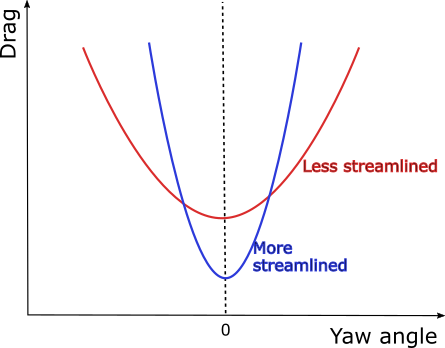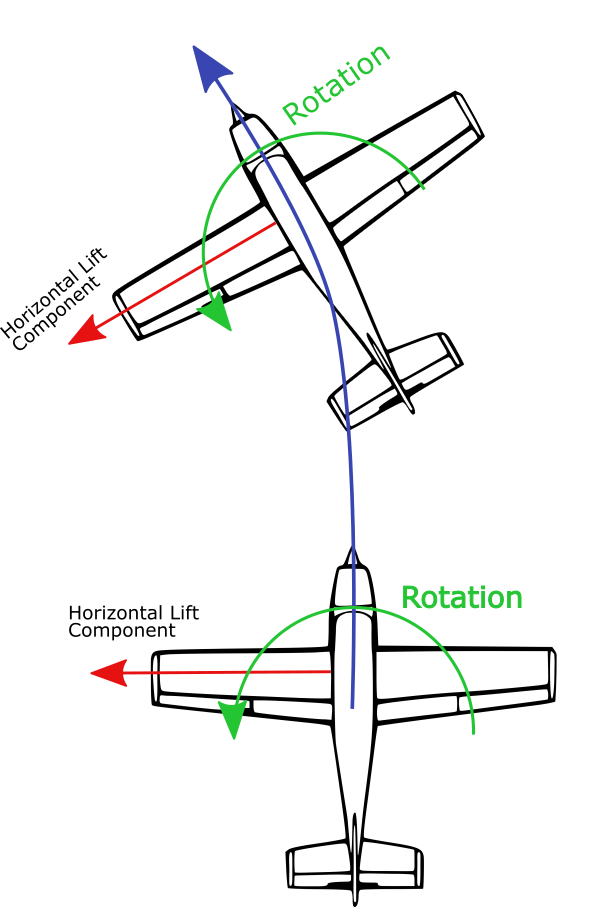Let’s start by addressing a common but flawed explanation. The conventional narrative goes like this: the airplane rolls into a bank, which redirects some of the vertical lift into a horizontal component. This horizontal lift then acts as the centripetal force, pulling the airplane through a turn.
While this sounds plausible, it’s overly simplistic and leaves out critical aspects of the physics involved—most notably, the role of the rudder.
In reality, two distinct motions must occur for an airplane to follow a circular path. First, there’s a lateral acceleration toward the center of the turn, which is indeed provided by the horizontal component of lift. Second, the aircraft must rotate about its vertical (yaw) axis to remain aligned with the direction of travel—this is the axial rotation. Both of these motions must be properly coordinated for a smooth, coordinated turn.
To better understand these two types of motion, consider the example of the moon orbiting the Earth. Earth’s gravity pulls the moon into a circular path, completing one orbit every 27 days. At the same time, the moon also spins on its own axis. Interestingly, the moon’s rotation period is also 27 days—this one-to-one match is called synchronous rotation. Because of this, the same side of the moon always faces the Earth.

This kind of synchronization doesn’t happen in all orbital systems. Take the Earth, for example: it orbits the sun once per year, but spins on its axis 365 times during that period. The key difference lies in a force called tidal friction. In the Earth–moon system, tidal forces have gradually synchronized the moon’s rotation and orbit. However, the tidal interaction between the Earth and the sun is too weak to have the same effect, so Earth’s orbital and rotational periods remain independent.
When an airplane makes a turn—essentially orbiting around a point—we want the same side of the airplane to continuously face the center of the turn. In other words, we aim for synchronous turning. While the horizontal component of lift creates the curved flight path (the “orbit”), it doesn’t cause the airplane to yaw or rotate about its vertical axis to stay aligned with that path. Just as in celestial mechanics, there must be an additional effect—analogous to tidal friction—that causes the aircraft to rotate and maintain its orientation during the turn.
Yet in practice, we observe that when an airplane is banked, the nose naturally swings into the turn—despite a brief adverse yaw at the onset. In effect, the airplane does achieve a synchronous turn. However, the horizontal lift component cannot be responsible for this yawing motion, because it acts through the same point as the airplane’s center of mass. So where does this yawing influence—the aerodynamic equivalent of tidal friction—come from? That’s the question we aim to explore.
It all comes down to the self-aligning tendency of a streamlined body—commonly known as the weathervaning effect. An aerodynamically shaped object naturally turns into the relative wind to minimize drag. The more streamlined the shape, the lower the drag when aligned with the airflow, and the more sharply drag increases as the yaw angle grows. This behavior is illustrated in the adjacent figure.
When an aircraft’s nose is not pointed directly into the relative wind, the resulting asymmetric drag creates a restoring yawing moment that turns the aircraft back into alignment. This aerodynamic restoring force is what keeps the airplane “facing” the center of the turn—much like tidal friction causes the moon to keep the same face toward Earth. In this analogy, the weathervaning effect serves as the aerodynamic counterpart to tidal friction.
Let’s now consider a more complete explanation of how airplanes turn. The process begins with banking the aircraft, which creates a horizontal component of lift. This lateral force pulls the airplane into a curved, or orbital, flight path. However, for the airplane to remain properly aligned with that path, it must also rotate to face the direction of travel.
This is where the weathervaning effect comes into play. A streamlined airframe naturally tends to align with the relative wind to minimize drag. The more streamlined the design, the more effective this self-aligning behavior becomes. If the airframe is less streamlined, it won’t yaw into the turn as readily, and the pilot must use the rudder to assist with this alignment.
This explains why different aircraft require varying amounts of rudder input during a coordinated turn. More streamlined aircraft generally require less rudder, while those with higher drag profiles need more. Speed also plays a role—at higher speeds, the weathervaning effect is stronger, reducing the need for rudder input.
In summary, two fundamental forces govern an airplane’s ability to turn:
- The horizontal component of lift when the aircraft is banked, which causes the airplane to follow a curved flight path.
- The yawing force that keeps the nose pointed into the turn, primarily due to the weathervaning effect and supplemented by rudder input.
For simplicity, this explanation excludes engine-related effects such as P-factor, spiraling slipstream, and adverse yaw, which can also influence yaw dynamics but are secondary to the core turning mechanism described here.


Leave a Reply